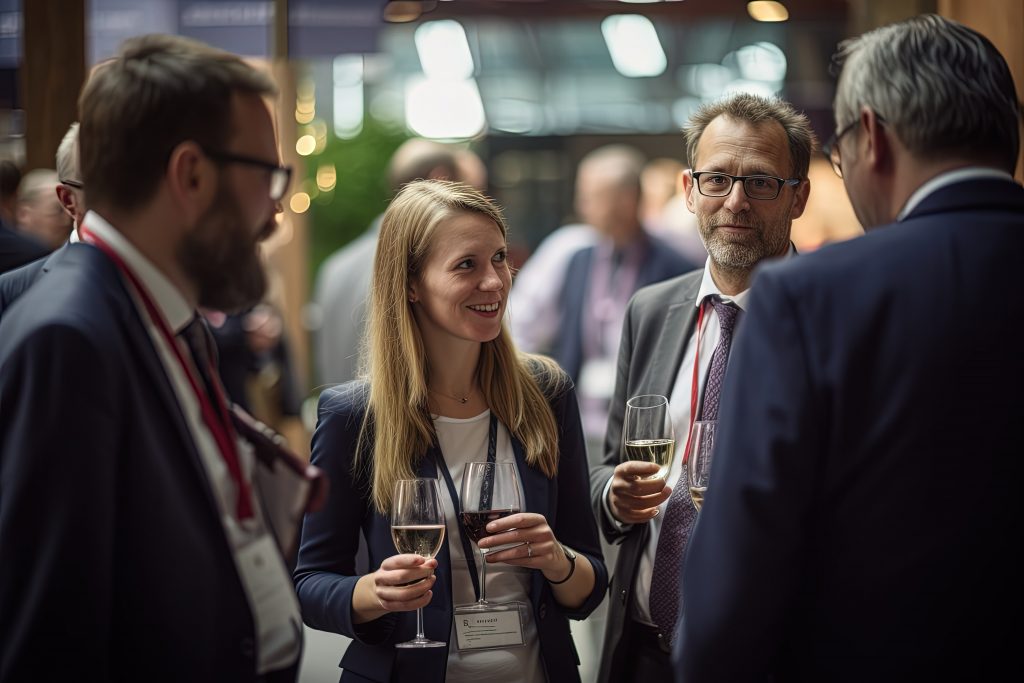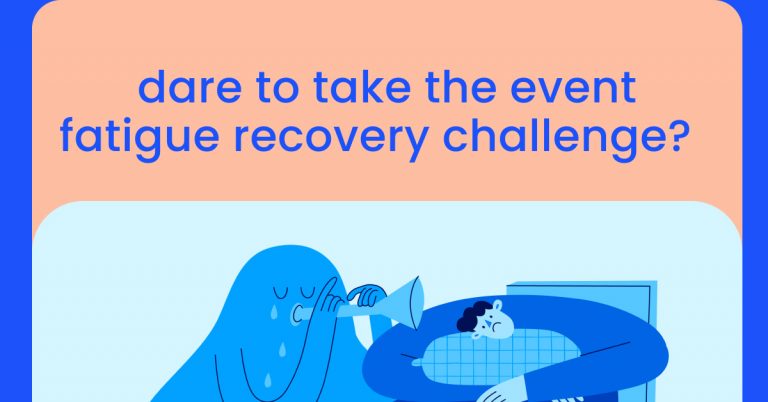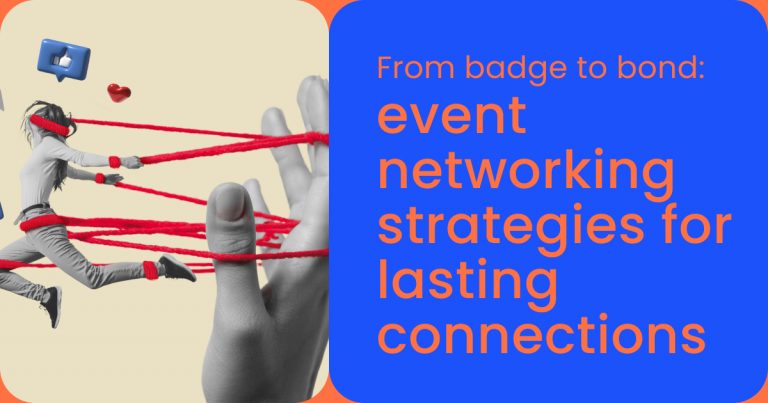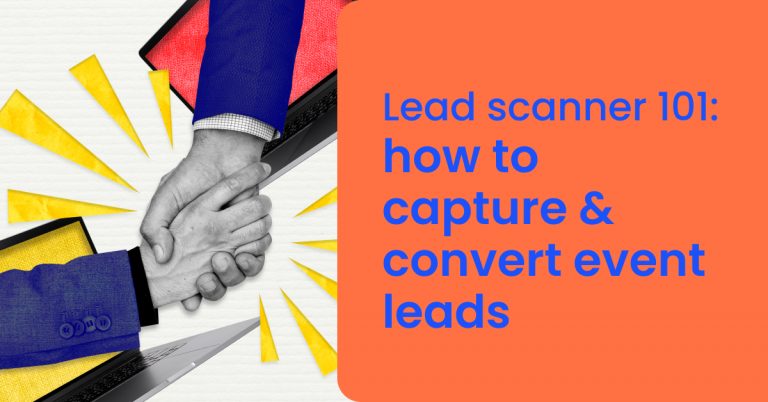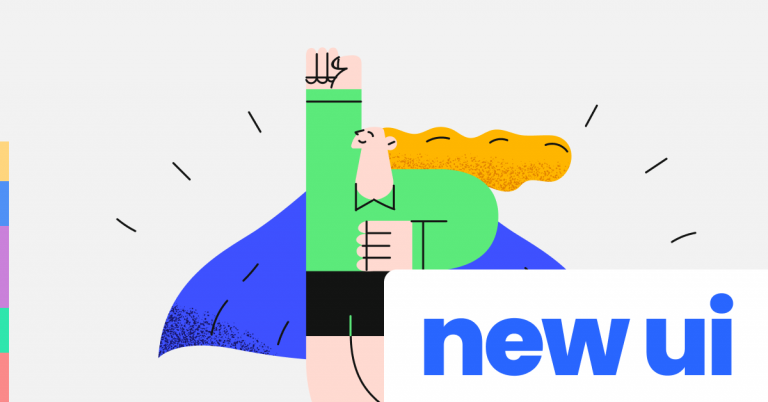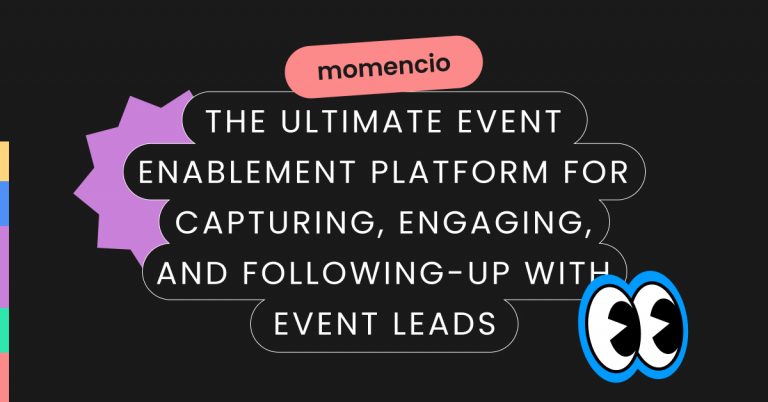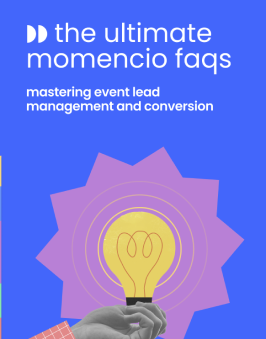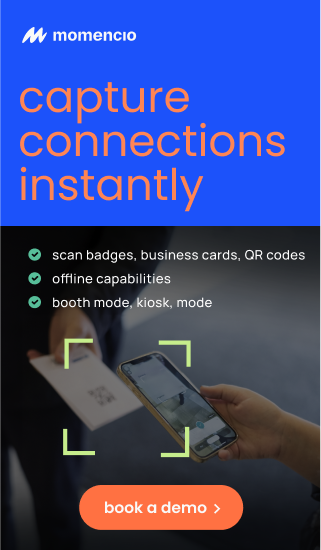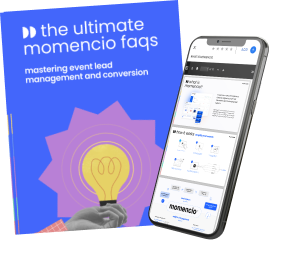Most companies spend thousands of dollars on trade shows and industry events but then are left wondering how to get event sales leads. They send their best sales reps, set up an eye-catching booth, scan hundreds of badges, and leave the event feeling like they have “generated leads.” But weeks later, when they look at actual conversions? Crickets.
This is the hard truth about event sales:
- Getting leads is easy. Converting them is what matters.
- Most companies focus on volume instead of quality.
- Speed and strategy are the two biggest success factors.
If you’ve ever walked away from an event thinking, ‘I had great conversations, so why am I not seeing results?’, you are not alone. Most event sales reps fail because they don’t have a clear, repeatable system for capturing, following up, and converting leads into paying customers.
This article will give you a no-nonsense strategy to:
- Attract and capture high-quality event leads (not just random contacts).
- Follow up in a way that actually gets responses.
- Convert those leads into customers—without losing momentum.
If you apply these insights, your next event will stop being an expense and start being a revenue-generating machine.
How to get event sales leads
Most event sales efforts fall apart after the event. Leads were engaged at the booth, conversations went well, but when it comes to converting them into paying customers, the process breaks down.
Why? Because most companies lack a structured, repeatable system for moving event leads down the sales funnel. They rely on generic follow-ups, weak sales pitches, and passive nurturing instead of a proactive conversion strategy.
Event leads are not yet sales opportunities. A scanned badge or an interesting conversation does not automatically mean the prospect is ready to buy. The first step in converting leads is transitioning them into real sales opportunities through qualification and engagement.
Step 1: Confirm the lead’s interest with a discovery call
If a lead was categorized as A or B in your lead scoring system, they should receive an invitation to a discovery call within a week of the event.
A discovery call should:
- Revisit their challenge to confirm it is still a priority.
- Understand their buying timeline to see if they are ready to act.
- Determine decision-making authority to avoid wasting time on low-level contacts.
The key to an effective discovery call is to build momentum from the event conversation rather than starting from scratch. Use phrases like:
“When we spoke at [event name], you mentioned struggling with [problem]. Have things changed, or is this still a priority for your team?”
If the lead reaffirms their need and expresses a clear interest in solutions, they are now a qualified opportunity and ready for the next step.
If they show hesitation or uncertainty, they should be placed into a long-term nurture campaign instead of being pursued aggressively.
Step 2: Personalize the sales pitch based on their event experience
One of the biggest mistakes sales reps make is using the same pitch for every lead. Event leads have already interacted with your company, so treating them like a cold prospect destroys engagement.
How to craft a post-event sales pitch that converts
Instead of a generic product pitch, your follow-up meeting should be tailored to the lead’s event experience. Structure it around three key points:
- What they experienced at the event
- Reference the demo, conversation, or presentation they engaged with.
- Reinforce their key pain points and what stood out to them.
- How your solution aligns with their needs
- Connect their pain point directly to your product’s capabilities.
- Use relevant case studies from similar companies.
- A clear path forward
- Offer a simple next step (e.g., trial, in-depth demo, pilot program).
- Align your proposal with their decision-making timeline.
Every lead should leave the meeting knowing exactly why your solution is relevant to them and what happens next.
Step 3: Use a five-email sequence to close the deal
Even the most interested event leads will not always commit immediately. Following up strategically after the pitch is essential for closing the sale.
Use this five-email sequence to keep engagement high without overwhelming the lead:
- Post-meeting summary (same day as call)
- Thank them for their time and summarize key discussion points.
- Restate their main pain point and how your solution fits.
- Provide a clear next step (e.g., proposal, pricing details, trial setup).
- Additional value (three days later)
- Share a case study, white paper, or webinar relevant to their challenge.
- Reinforce why companies in their industry choose your solution.
- Addressing concerns (one week later)
- If they have not responded, send an email addressing common objections.
- Example: “Many companies hesitate because of [objection], but here’s how we solve that.”
- Limited time offer (ten days later)
- Provide an incentive for acting quickly (discount, additional service, free trial).
- Final check-in (two weeks later)
- Keep it short and direct: “Would it make sense to continue the conversation?”
- If no response, move them to a long-term nurture sequence.
This sequence keeps leads engaged while ensuring that every follow-up adds value instead of feeling repetitive.
Step 4: Align with the buying process to close the deal
Sales cycles vary by industry, but one universal truth applies: If you do not align with the buyer’s decision-making process, you will not close the deal.
Common reasons deals stall:
- The prospect needs internal buy-in but lacks support.
- Budget approvals take longer than expected.
- Decision-makers are not fully convinced.
How to keep the deal moving
- Identify all stakeholders early
- Ask: “Who else needs to be involved in this decision?”
- Offer to present your solution directly to other stakeholders.
- Simplify the decision process
- Provide comparison charts, ROI calculations, and competitor analysis.
- Remove unnecessary steps that delay commitment.
- Use a closing framework that guides the buyer
- Instead of “Do you want to move forward?” say:
“Would you like to move forward with [Option A] or [Option B]?” - Giving options reduces friction and speeds up decision-making.
- Instead of “Do you want to move forward?” say:
If the lead is not ready to close immediately, schedule a follow-up timeline to keep communication active instead of letting the deal go cold.
Step 5: Strengthening engagement through multi-touch nurturing
Even after an effective sales meeting, many leads are not immediately ready to buy. Some need internal approval, others require additional research, and a few may not be prioritizing the problem just yet. This does not mean they are lost opportunities—just that they need to be nurtured.
Many sales teams lose momentum at this stage. They assume that if a lead does not commit right away, further follow-ups will seem pushy. However, the key to keeping a deal alive is to maintain engagement without overwhelming the prospect.
Why multi-touch nurturing works
A single sales meeting is rarely enough for decision-makers to move forward. Research shows that an average of six to eight touchpoints are required to convert a lead into a customer. These touchpoints should offer value rather than just being reminders to “check in.”
Types of effective nurturing touchpoints
- Insight-driven content sharing
- Send relevant case studies, white papers, or reports that align with the lead’s industry or challenges.
- If possible, highlight similar companies that have successfully used your product to solve the same problem.
- Personalized video messages
- A short video summarizing key discussion points and next steps adds a personal touch and keeps engagement high.
- It differentiates your follow-up from generic emails that are easily ignored.
- Industry updates and thought leadership
- Share articles, trends, or regulatory changes that impact the lead’s business.
- Position yourself as a valuable resource rather than just a vendor.
- Exclusive invitations
- Invite the lead to an upcoming webinar, workshop, or event that aligns with their interests.
- If your company hosts private networking sessions, offering them access adds an element of exclusivity.
- Strategic check-ins
- Every follow-up should have a clear purpose. Instead of just asking if they have made a decision, bring new insights or ask for their perspective on something relevant to their business.
The goal of nurturing is to stay top of mind while reinforcing the value of your solution. Leads should feel like they are being supported, not pressured.
How to automate and scale nurturing without losing personalization
For companies dealing with a large number of event leads, manually managing every touchpoint is inefficient. Using marketing automation tools, CRM workflows, and email sequencing can help scale nurturing while maintaining personalization.
- Segment leads based on their level of interest (hot, warm, cold) and create tailored nurturing tracks for each.
- Use dynamic email content to personalize messaging based on the lead’s previous interactions.
- Track engagement with analytics tools to see which leads are actively engaging with content and which need a different approach.
Multi-touch nurturing ensures that even if a lead does not convert immediately, they remain engaged until they are ready to move forward. This is the difference between a sales process that loses leads and one that continuously builds a strong pipeline.
Conclusion: The mindset shift that increases conversions
Most event sales reps approach trade shows with the wrong mindset. They assume their job is to collect leads, when in reality, their job is to start conversations that lead to sales.
The companies that succeed with event sales do three things differently:
- They qualify leads at the event instead of collecting random contacts.
- They follow up with speed and a clear strategy.
- They move leads through a structured sales process that aligns with buyer needs.
Without these steps, even the best trade show strategy will fail.
If your company is serious about turning event leads into real revenue, you need a repeatable, scalable process that ensures every event leads to measurable sales outcomes.
Optimize your event sales with the right tools
Converting event leads requires more than just good follow-up—it requires the right systems and tools.
If you are looking for a way to:
- Capture and qualify leads instantly at events
- Automate follow-ups to increase response rates
- Track sales progress and optimize conversion strategies
Then you need a platform designed specifically for event-driven sales success.
Book a demo with momencio today and see how technology can transform your event sales process.
FAQs
- What’s the best way to capture leads at trade shows?
- The best method is to use a lead capture system that allows real-time qualification. Scanning every badge is inefficient—focus on identifying high-quality leads by asking the right questions.
- How fast should I follow up after an event?
- The same day is ideal. If that’s not possible, follow up within 24 hours to stay top of mind. The longer you wait, the colder the lead becomes.
- What should I say in my follow-up email?
- Personalization is key. Reference your conversation, restate their pain point, and provide a clear next step. Avoid generic “great meeting you at [event]” messages.
- How do I know if my event leads are qualified?
- A qualified lead has a problem your product solves, an interest in a solution, and the authority to buy. If any of these are missing, they require more nurturing before becoming a real opportunity.
- What’s the best CRM or software for managing event leads?
- The best solution is one that integrates lead capture, follow-up automation, and sales tracking in a single platform—like momencio.
Interesting facts from research
- Companies that follow up with leads within five minutes are 21 times more likely to qualify a lead than those that wait 30 minutes. This shows that speed in follow-ups is a critical factor in converting event sales leads.
- Only 2% of sales are made during the first point of contact. This means that event leads require multiple follow-ups before a deal is closed. Companies that stop after one or two emails leave potential revenue on the table.
- Companies that use CRM and automation tools to manage their event sales process generate 67% more revenue than those relying on manual follow-ups. Streamlining lead tracking, engagement, and conversion workflows improves efficiency and results.

